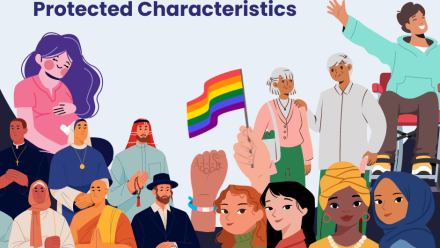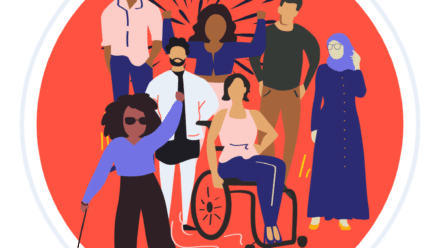Why digital inclusion is a business benefit
9th March 2020 by Ellie Thompson
By Jo Faragher for D&I Leaders
Most employers know their obligations to make reasonable adjustments under the Disability Discrimination Act, but there’s also a strong business case in favour of more inclusive design and business practices overall.
According to consulting firm Accenture’s Disability Equality Index benchmark, leaders in disability employment and inclusion often outperform their peers – with 28% higher revenue, twice the net income and a 30% higher profit margin. “An often under recognised group is those with disabilities,” it claims. “Providing increased access to technologies that meet the needs of persons with disabilities lays the foundation for inclusive work cultures that enable these employees to thrive – presenting a tremendous opportunity.”
Yet one of the challenges is that too many organisations focus on compliance, introducing accessibility technology as an “insurance” in case they are accused of falling foul of the legislation, says Jonathan Hassle, founder of Hassle Inclusion, a digital inclusion specialist. Or they’re falling at the first hurdle by not making their recruitment processes accessible to everyone. “If recruitment processes aren’t accessible to certain people then those people could never be employees of the organisation. In some cases, doing the actual job could be easier than applying for it for some people,” he adds.
The key to making technology more accessible at work is to ensure that the underlying tools themselves are flexible and open to development, advises Hassle. Furthermore, it’s important not to assume that one adjustment that will help someone will help all people with disabilities. “A dyslexic person can struggle with ‘white glare’ if there is high contrast on a screen, for example, while someone with a visual impairment needs high colour contrast and big print,” he says.
Don’t put people in boxes
Hilary Stephenson, managing director of user experience agency, Sigma, agrees that organisations need to adopt a more holistic approach. “Reasonable adjustments, just like web accessibility guidelines, often focus on a minimum duty of care,” she says. “Taking a checklist approach to inclusion limits the potential for individuals and organisations to flourish.” Instead, she advocates a broader approach to inclusive design, rather than putting people in boxes. “For example, not all blind people use screen readers and not all deaf people use sign language. We are all aging and we can all face temporary or situational impairments,” she adds.
Some of the most commonly overlooked aspects are everyday tools such as email. There are a number of assistive technologies that help people with disabilities access the web and email, including screen readers, text-to-speech technologies and screen magnifiers. But it’s also crucial to ensure that employees more widely think about how they use such tools, according to James Hall, commercial director for Striata UK, a digital comms company. “Most email writers already know the importance of ensuring that the content has a logical flow, and the message is easy to understand,” he says. “This becomes more important when one considers how email will be read by a visually impaired person or anyone with cognitive disabilities such as dyslexia. So, for example, subject lines should be short and to the point in order to perform best when read aloud through a screen reader. Language should be similarly clear and concise.” And of course, making these changes will benefit everyone, not just those with specific disabilities.
For neurodiverse people, certain elements of collaboration in the workplace can feel threatening. One way to make this feel more inclusive is to find a way to ‘crowdsource’ ideas in a more informal way, according to Simon Hill, CEO of idea management platform Wazoku. “Neurodiverse employees think in a different way, have a lot to offer in terms of innovation and problem-solving, and can have ideas that neurotypical people just wouldn’t think of,” he says. “Yet at the same time, many neurodiverse people find elements of office life stressful and can be uncomfortable with sharing their ideas in the conventional way.” Submitting ideas via a digital tool rather than a daunting meeting can help get around this, he adds.
Growth area
As more employers realise that making workplace technology more accessible can have wider business benefits, demand for tools and services that support this is on the rise. At Plexal, a co-working space in East London, there is a 12-week accelerator programme called OpenDoor that supports the growth of products, services and projects that make work more inclusive through technology. It includes the first fully accessible, specially designed space for entrepreneurs and business leaders who are either disabled or focused on developing products for the disabled community.
Increasingly, organisations are looking at accessibility passports, which means that one ‘passport’ can be used across that business and potentially other organisations, so people do not have to be reassessed each time they start a new job. It’s all about an attitudinal shift, says Atif Choudhury, chief executive of Diversity and Ability. “Reasonable adjustments is the first place to start, but really it’s about going beyond that and making an attitudinal shift by building anticipatory thinking. This will help recruit and include diverse and disabled employees rather than problematising them through reasonable adjustments. There’s a lot to be said about informed practice and being really open to an individual and what they can teach about what it means to be accessible in our thinking,” he concludes.


